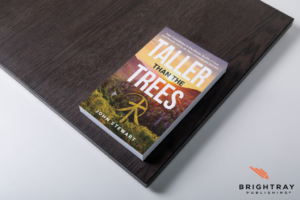Jumping into a book without an outline is like going on a road trip without a map or phone to give you directions. It’s possible, sure, but it’s frustrating and certainly not time efficient. You need an outline that’s effective for your needs. Writing an effective outline is a subjective phrase; there are different ways to create outlines and your approach will depend on your writing style.
An outline can be used at any part of the writing process, but it’s most effective in the pre-writing or early writing stages. You can modify the outline as you write—it’s not set in stone. If you’re a detailed-oriented person, make the outline as thorough as possible. If you’re more of a go-with-the-flow kind of writer, then you can just use the guideline as a simple reference. Maybe a combination of these two is best for you.
The benefit of a detailed outline is that it spells out each part of your manuscript and serves as the “blueprint” for writing your book. You can include the key points and headings, the supporting facts, perhaps even transitions or connecting thoughts. This approach can also show you the gaps in your knowledge so that you can do more research about the specific points. By addressing those gaps now rather than in the actual writing process, you’re able to write fluidly later without interrupting your flow to do more research. Who knows, maybe you’ll even find more key points to include in your work. It’s easier to include those points now than to try to incorporate them later.
An outline is a starting point, not a set of requirements.
A detailed outline is essentially the paper or book itself; with a little more elaboration, it comes the first draft. A drawback of this approach is that it’s time-consuming. It will take consideration and extensive knowledge on your topic. In addition, you’ll need to know your key points ahead of time. For some people, that’s a given, but others develop their key points and ideas as they go about writing.
This style is more of a go-with-the-flow approach. Even if you recognize this as your style, you should still create at least a general outline to brainstorm your organization. You can let the writing flow while making sure that you cover your key points, and a simplified outline will serve that purpose. Sometimes an overly-detailed outline can feel like it’s stifling your creativity, in which case, you’ll want a guideline that acts as a vague reference instead of precise points.
Regardless of which outline works best for you, there are some standard components your outline should have. Your outline should include the purpose, the audience, a thesis, and the key points you’ll discuss. Especially when your book will require research and referring to outside material, I also recommend using your outline as a place to keep your sources organized. You don’t have to include a full citation, but marking the name of the book, article, or video you plan on mentioning will help maintain the section’s focus and it will save you from hunting for the name in your notes later.
In a sense, an outline is a brainstormed list. You’re planning out your key points, supporting information, sources, etc. But none of this content is set in stone. In all likelihood, your outline will be just a shadow of your final product. That’s perfectly fine. Your outline is a starting point, not a list of requirements. Writing an effective outline means something different for each other, so take the time to play around and see what style suits your needs the best.
Crafting an effective outline is a vital step in the writing process, serving as a roadmap to guide you through the creation of your manuscript. Whether you prefer a detailed blueprint or a more flexible guideline, the key is to find an approach that aligns with your writing style and helps you stay organized and focused. An outline not only helps you structure your thoughts and ideas but also allows you to identify and address any gaps in your knowledge early on, ensuring a smoother writing process later. As you embark on your writing journey, consider the invaluable support and resources offered by BrightRay Publishing. Our team of professionals is dedicated to assisting authors at every stage of their writing journey, from crafting outlines to polishing manuscripts and navigating the complexities of publication.
Schedule a call with us today to learn how we can help bring your writing project to life with clarity and precision!




